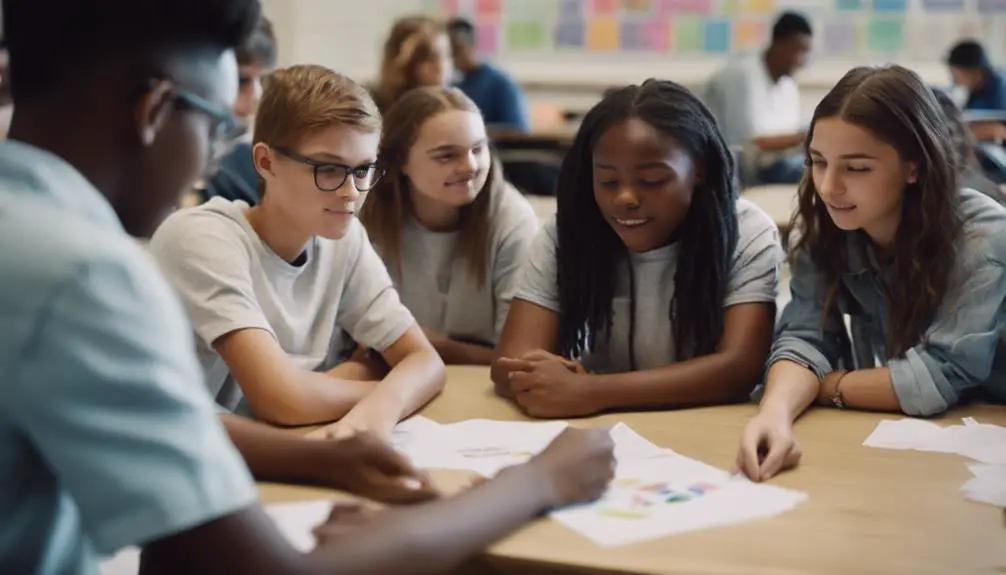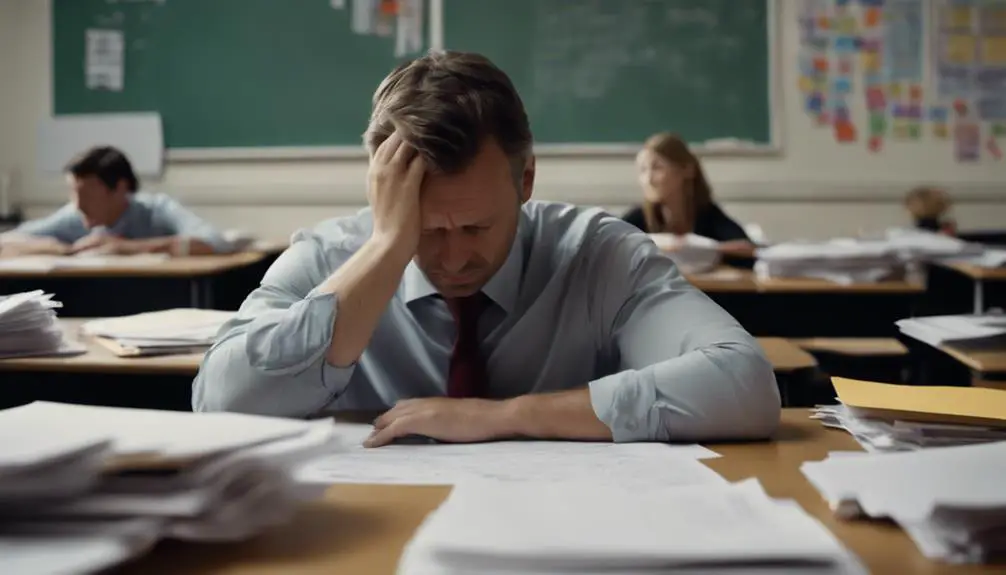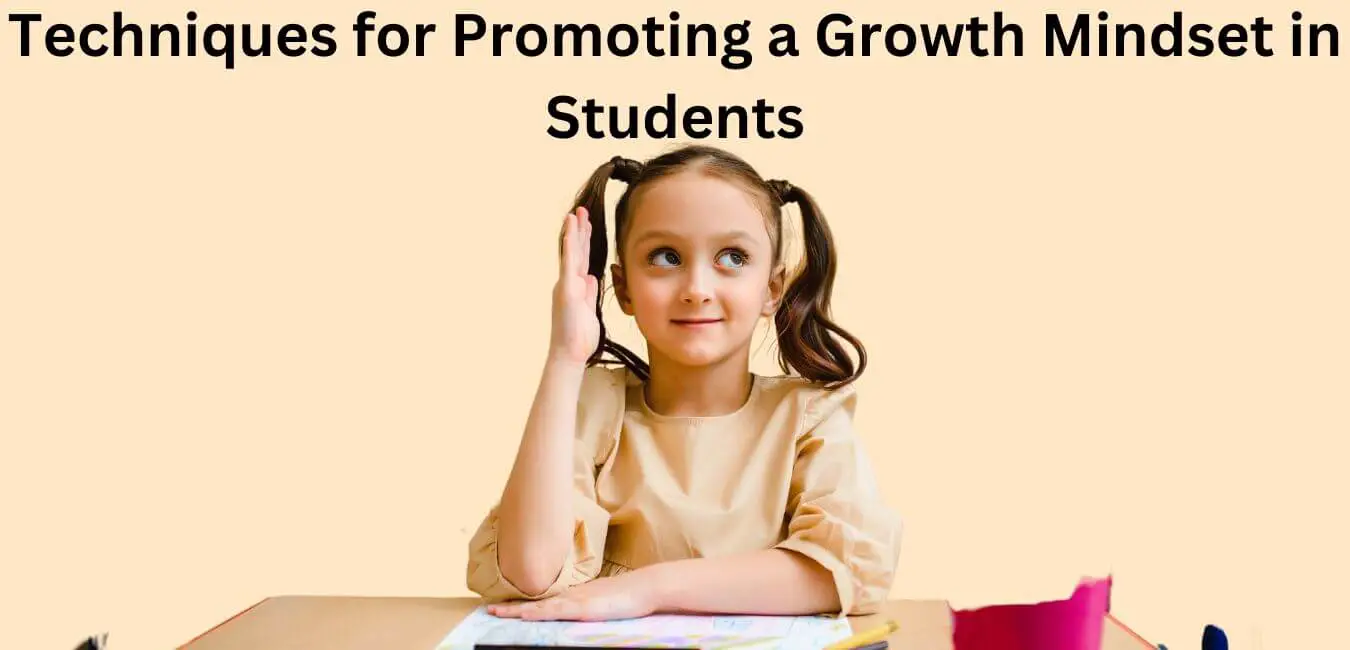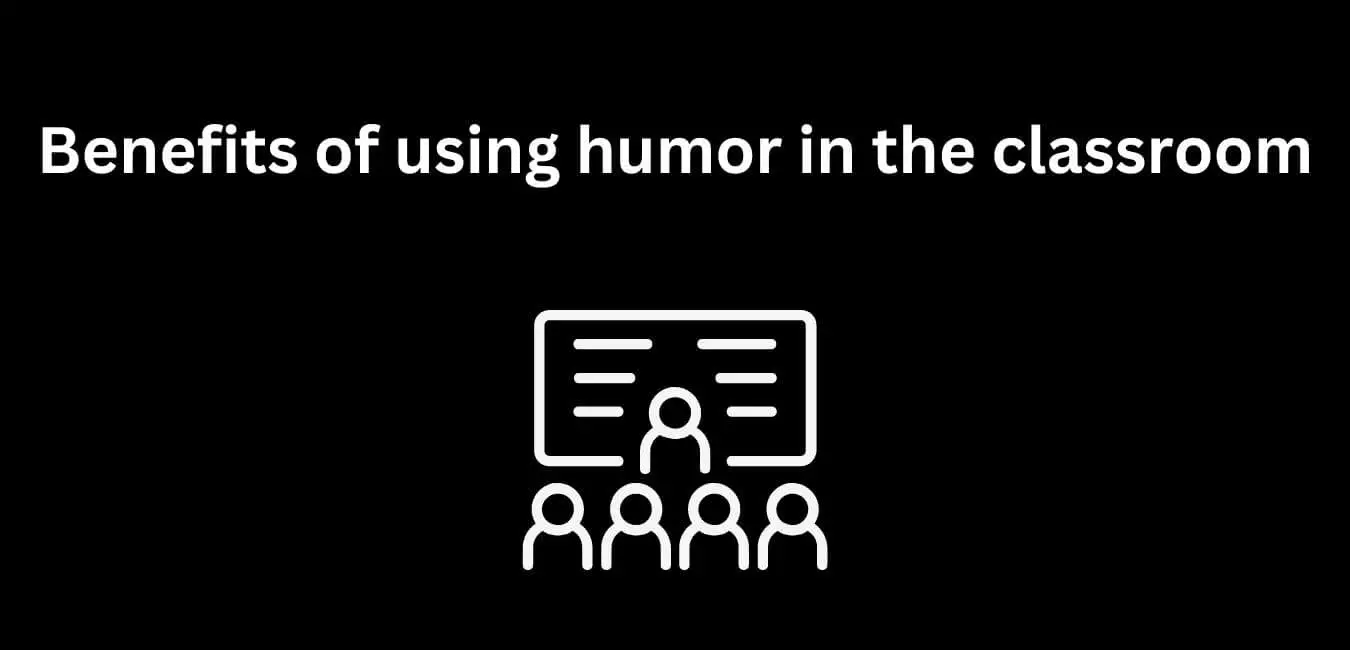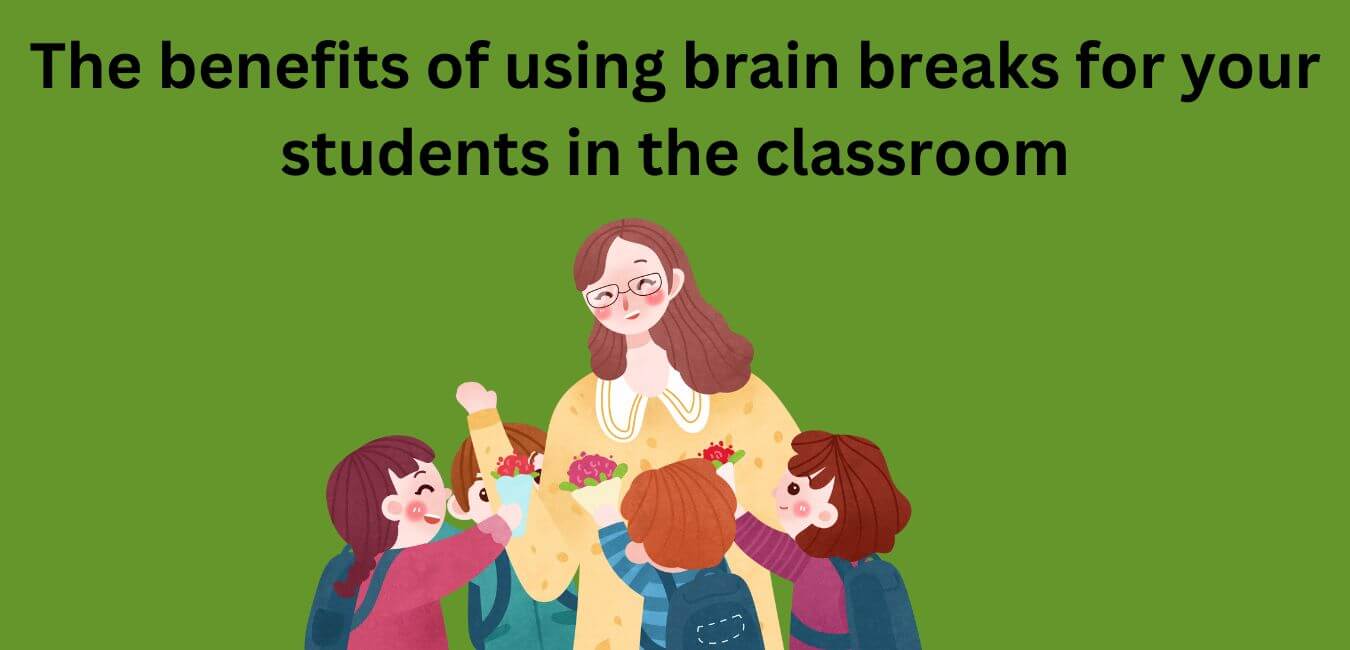Looking to develop effective teamwork skills in your classroom?
With 19 practical strategies, you can help your students collaborate smoothly and achieve success together.
These strategies range from setting clear expectations to using technology for better teamwork.
By implementing these approaches, you can improve the dynamics of teamwork in your classroom and see your students work together towards common goals more effectively.
Strategies I Use to Teach Teamwork in My Classroom
Set Clear Expectations
Begin by clearly stating what you expect from students when they work in a team. Define roles, responsibilities, and the goals they need to achieve
When teaching teamwork in my classroom, I make sure to set clear expectations by outlining specific roles, responsibilities, and goals for each student in a team. Role clarity is essential to ensure that every team member understands their tasks and how they contribute to the group’s success. Defining roles clearly helps students focus on their strengths and collaborate effectively.
Understanding group dynamics is crucial for team performance. I stress the importance of recognizing each other’s strengths and weaknesses to align strengths within the team. Encouraging students to leverage their unique abilities fosters a cohesive and productive team environment.
I promote active engagement by encouraging students to participate in discussions, share ideas, and collaborate on tasks. Active participation enhances learning and strengthens the team’s bond and overall performance. It’s vital for students to feel valued and actively involved in the team’s activities.
Building trust is a fundamental aspect of successful teamwork. I organize trust-building activities and discussions to create a supportive and open environment where students feel comfortable sharing their thoughts and working towards common goals. Establishing trust among team members enhances collaboration, communication, and ultimately leads to success.
Establish Group Norms
Have your students come together to create a set of rules for how they will interact and resolve conflicts
Creating group norms is essential for building a strong and efficient team. By establishing clear rules for how team members will interact and resolve conflicts, you can improve communication and team dynamics.
Ice breaker activities can help break down barriers and foster open discussions, while active listening ensures that everyone’s voice is heard and valued. Assigning roles based on each member’s strengths can lead to a smoother workflow and better collaboration.
Developing a shared vision and setting common goals can further unify the team and provide a sense of purpose and direction. This shared vision acts as a guiding principle, keeping the team motivated and focused on achieving their objectives.
Assign Roles Based on Strengths
Get to know your students and assign roles that play to each individual’s strengths within the team
When it comes to optimizing teamwork in the classroom, it’s essential to assign roles to students based on their strengths. By understanding each student’s abilities and assigning roles that align with their strengths, you can create a collaborative and productive team dynamic.
Here are three key strategies to consider:
- Leveraging Strengths: Recognize the unique strengths of each student, such as leadership, creativity, organization, or communication skills. Tailor roles that allow individuals to excel in their areas of expertise, boosting confidence and enhancing overall team performance.
- Clarifying Individual Roles: Assign specific roles to each team member based on their strengths to clarify responsibilities and expectations. Whether it’s a facilitator, timekeeper, researcher, or presenter, each role contributes to the team’s success, fostering a sense of ownership and accountability.
- Building Effective Team Dynamics: Creating collaborative teams by considering personal strengths leads to a harmonious and efficient working environment. When team members feel valued for their unique contributions, they’re more motivated to work together, support one another, and achieve common goals effectively.
Teach Active Listening
Encourage students to listen actively to their peers by making eye contact, nodding, and providing feedback, ensuring everyone feels heard
Encouraging active listening among students creates a collaborative and respectful classroom environment where every voice is valued. Active listening goes beyond just hearing; it involves making eye contact, nodding, and giving feedback. Through these actions, students show respect for each other and ensure that everyone feels heard and understood.
Effective communication is key to building trust in the classroom, and active listening plays a crucial role in this process. When students actively listen to one another, they foster a space where ideas can be freely shared and diverse perspectives are welcomed. Encouraging students to ask questions and challenge assumptions further enriches this environment of trust and collaboration.
Engaging in activities that promote active listening, such as group discussions and peer feedback sessions, allows students to practice these skills in a supportive setting. By incorporating icebreakers that highlight listening and communication, educators can establish a classroom where each individual is respected and valued. Teaching active listening not only enhances teamwork skills but also nurtures empathy, understanding, and a sense of community among students.
Build Trust Through Ice-Breakers
Kick things off with fun activities that help students get comfortable with each other
Creating a collaborative classroom environment starts with engaging ice-breaker activities that help students build trust and connections. By incorporating fun games, trust-building exercises, and icebreaker activities, you can establish a positive and inclusive atmosphere where students feel at ease. Here are three key strategies to consider:
- Interactive Games: Introduce enjoyable games that encourage student interaction in a relaxed setting. From simple name games to team-building challenges requiring communication and cooperation, these activities help students connect.
- Trust-Building Activities: Include exercises like blindfolded partner walks or trust falls to foster trust among students. These activities promote reliance on one another, fostering bonds based on mutual respect and understanding.
- Icebreaker Sessions: Start each class or group session with a quick icebreaker to break down barriers and ease tensions. These activities can be as simple as sharing interesting facts about themselves or participating in teamwork tasks.
Use Team-Building Exercises
Integrate activities that require students to work closely together, building camaraderie and trust
To create a collaborative classroom environment, it’s important to incorporate team-building exercises that encourage students to work closely together. These activities help foster camaraderie and trust among students. By engaging in trust-building activities, students develop a strong foundation of mutual respect and understanding within the classroom. Through collaboration exercises, students learn valuable skills such as effective communication, active listening, and appreciation for diverse viewpoints. These teamwork challenges not only improve their interpersonal abilities but also cultivate a sense of unity and inclusion.
Unity building tasks provide students with opportunities to work towards a shared goal, emphasizing the significance of cooperation and collective achievement. Camaraderie building games help students form bonds and offer support to one another, creating a positive and welcoming classroom culture. These activities encourage students to rely on one another, promoting a spirit of teamwork and collaboration that extends beyond the classroom.
Create a Shared Vision
Help teams develop a unified vision and goals for their projects, fostering a sense of shared purpose
I guide students in developing a unified vision and goals for their projects to create a strong sense of shared purpose. This process is vital for ensuring that teams are aligned and working together towards a common objective.
Here are three key strategies I use to foster a collaborative vision:
- Vision Alignment: I encourage team members to share their perspectives on the project’s purpose and outcomes. Through open discussions, we work together to align these viewpoints into a cohesive vision that represents the team’s collective aspirations.
- Shared Purpose: By highlighting the importance of the project and how each team member contributes to its success, I cultivate a sense of shared purpose. This shared understanding motivates students to collaborate effectively, knowing that their efforts are interconnected and essential for achieving the team’s goals.
- Unified Goals: Establishing clear and achievable goals that resonate with the team’s vision is crucial for maintaining focus and direction. I collaborate with students to set milestones and objectives that reflect our shared vision, promoting unity and cohesion in working towards common outcomes.
Through these strategies, I aim to enhance team cohesion and empower students to work collaboratively towards a shared vision, fostering a strong sense of purpose and camaraderie within the team.
Teach Conflict Resolution Skills
Show students constructive ways to address and resolve disagreements within the group
Teaching students how to address and resolve disagreements within a group is crucial for promoting a positive and effective team environment. Role-playing activities are a great way to help students see different perspectives and practice resolving conflicts in a safe space. By participating in scenarios where they take on various roles, students can develop empathy and improve their communication skills, especially in challenging situations.
Equipping students with conflict resolution techniques is essential for helping them navigate disagreements respectfully. Teaching them peer mediation skills empowers them to play an active role in resolving conflicts within their teams. Encouraging the use of active listening strategies enables students to truly grasp each other’s viewpoints before working together to find solutions collaboratively.
At the heart of effective conflict resolution is collaborative problem-solving. Guiding students to collaborate and find common ground helps them understand the value of teamwork and compromise. Stressing the importance of maintaining a positive and respectful attitude during conflicts can turn disagreements into opportunities for growth and can strengthen relationships within the group.
Encourage Questioning of Assumptions
Get students to think critically by encouraging them to question their ideas and assumptions
Encouraging students to question their ideas and assumptions is key to developing critical thinking skills and fostering a deeper understanding in the classroom. When students challenge assumptions, they go beyond accepting information at face value, engaging in a process that promotes critical thinking and enriches their learning experience.
- Developing Critical Thinking: Encouraging students to question assumptions helps them enhance their critical thinking skills. This enables them to analyze information more effectively and gain a comprehensive understanding of the subject matter.
- Exploring Different Perspectives: Encourage students to reflect on various perspectives and viewpoints. By doing so, they can appreciate that there are multiple ways to approach a situation, leading to a more open-minded and holistic problem-solving approach.
- Examining Beliefs: Encourage students to analyze their own beliefs and assumptions. By questioning their preconceived notions, they can develop a more nuanced understanding of complex issues and become more receptive to new ideas and perspectives.
Practice Giving and Receiving Feedback
Teach students how to provide constructive criticism and be receptive to it as well
Creating an environment where students can practice giving and receiving feedback is crucial to enhancing their critical thinking skills. Feedback plays a key role in developing teamwork abilities and improving communication among students. Teaching students how to provide constructive criticism helps them understand the impact of their words on others and fosters effective communication.
Constructive feedback involves pointing out both strengths and areas for improvement. When giving feedback, it’s important to be specific and offer actionable suggestions. This approach helps students learn how to provide valuable input that can lead to meaningful growth. Teaching students to give feedback with empathy and respect creates a supportive learning environment where everyone feels valued.
Learning to accept criticism gracefully is also an essential skill. Students should focus on learning opportunities rather than taking feedback personally. By cultivating a mindset of continuous improvement, students can use feedback as a tool for self-development and enhancing their teamwork skills. Mastering the art of giving and receiving feedback is fundamental to promoting effective teamwork and collaboration among students.
Mix Up Groups Regularly
Switch team members now and then to help students learn to work with diverse personalities and skills
Regularly changing group members in the classroom is beneficial for helping students develop teamwork skills by learning to collaborate with a variety of personalities and skills. This approach fosters a more inclusive environment and prepares students for real-world scenarios where they’ll need to cooperate with different individuals. Here are three key benefits of rotating team members:
- Understanding Different Personalities: Rotating group members allows students to interact with peers they may not have worked with previously. This exposure helps them grasp various communication styles, conflict resolution methods, and ways of working, ultimately enhancing their adaptability and empathy.
- Exploring Diverse Skills: Team member rotation enables students to work with individuals who bring unique skill sets to the group. This diversity can lead to more profound discussions, innovative solutions, and a greater appreciation for each team member’s strengths.
- Building Interpersonal Connections: Changing group compositions encourages students to form relationships with a broader range of classmates. These connections can lead to stronger bonds, increased trust, and improved collaboration both inside and outside the classroom.
Define Clear Communication Channels
Whether it’s in-person discussions or an online platform, provide a way for team members to communicate clearly
Rotating team members to understand different personalities and explore diverse skills naturally leads to the need for clear communication channels for effective teamwork in the classroom. Active participation is crucial for creating an environment where every team member feels heard and valued. By setting up effective communication channels, like regular check-ins or using online platforms for discussions, students can share ideas, give feedback, and address any issues promptly.
In the realm of team dynamics, transparent and open lines of communication are essential for building trust among team members. Collaborative strategies such as establishing communication norms or scheduling group meetings can boost productivity and ensure everyone is on the same page. Encouraging active participation in discussions and decision-making processes can strengthen group cohesion and foster a sense of unity within the team.
To maintain effective communication channels, it’s vital for educators to model and emphasize the importance of respectful and clear interactions among students. By demonstrating and reinforcing these behaviors, teachers can instill valuable communication skills in their students that will benefit them not only in the classroom but also in future collaborative efforts.
Model Teamwork
Reflect the attitudes and behaviors you want your students to exhibit in your teaching style
Incorporating teamwork into my teaching style means practicing the collaborative attitudes and behaviors I expect from my students. Leading by example as an educator involves showing the importance of working together towards shared goals.
Ways to Model Teamwork in the Classroom:
- Leading by Example: Demonstrating a willingness to collaborate with colleagues and students sets a strong example. Showing respect, listening actively, and communicating openly in all interactions helps create a culture of teamwork.
- Encouraging Collaboration: Supporting students to work in groups, join discussions, and participate in group projects encourages a sense of community and cooperation among peers.
- Emphasizing Unity: Highlighting the value of unity within diversity helps students appreciate different perspectives and backgrounds. Creating an inclusive environment where every voice is valued and respected is essential for fostering a strong sense of unity within the classroom.
Incorporate Reflection Sessions
After team activities, have a debrief session where students can reflect on what worked well and what can be improved
To improve the collaborative learning experience, I lead reflection sessions after team activities. These sessions allow students to review what went well and what could be enhanced. Reflecting on successes during team activities is important as it reinforces positive behavior and boosts team morale. Celebrating even small achievements contributes to creating a supportive learning environment.
Additionally, these sessions focus on receiving feedback for improvement. By openly discussing areas that need enhancement, students learn to accept constructive criticism positively. This process promotes accountability and encourages students to take responsibility for their contributions to the team.
Use Cooperative Learning Structures
Implement strategies like Jigsaw or Think-Pair-Share to structure team interactions effectively
Implementing cooperative learning structures like Jigsaw or Think-Pair-Share can significantly improve team interactions. These strategies promote collaborative projects, teamwork skills, peer engagement, group dynamics, and cooperative learning. Here are three key benefits of using these structures in your classroom:
- Enhanced Collaboration: Through methods like Jigsaw, students work in small groups where each member is responsible for a specific piece of information. This setup fosters collaboration as students must collaborate to assemble the information, promoting teamwork and effective communication.
- Increased Peer Interaction: Think-Pair-Share encourages students to discuss their ideas with a partner before sharing with the larger group. This approach boosts peer interaction by providing a platform for students to express their thoughts, actively listen to others, and build on shared ideas, thus enhancing overall group dynamics.
- Improved Group Dynamics: Cooperative learning structures establish a supportive setting where students learn to cooperate, respect diverse viewpoints, and contribute to the team’s success. This collaborative environment nurtures a sense of community in the classroom, enhancing positive group dynamics and fostering a culture of cooperation among students.
Provide Scaffolding for Learning
Offer guidance and support as teams navigate the problem-solving process
When working together as a team to solve problems, it’s important to provide guidance and support to help everyone navigate the process effectively. Peer feedback is a valuable tool in this journey, allowing students to learn from each other’s perspectives and experiences. By encouraging peer feedback, students can gain a better understanding of various problem-solving strategies and improve how they work together as a group.
Effective teamwork relies on strong group dynamics, and by offering structured guidance, educators can assist teams in overcoming challenges that may arise during problem-solving. Scaffolding promotes reflective learning, enabling students to evaluate their strengths and areas for improvement within the team dynamic. Clear communication is essential to ensure that all team members are aligned and working towards a common goal.
In my role as an educator, I strive to provide the necessary support and resources for students to succeed in their collaborative efforts. Through scaffolding their learning experience, I aim to create a supportive environment where students feel empowered to collaborate, communicate effectively, and tackle complex problems as a team. With guidance and encouragement, students can develop crucial teamwork skills that won’t only benefit them in the classroom but also in their future endeavors.
Practice Problem-solving in Teams
Give students complex problems that require teamwork to encourage critical thinking and cooperation
Encouraging students to work together on challenging problems helps them develop critical thinking and collaboration skills vital for effective teamwork. When students engage in problem-solving tasks as a team, they deepen their understanding of cooperation and refine their analytical abilities.
Here are three effective ways to incorporate problem-solving in teams:
- Utilize Various Problem-Solving Strategies: Introduce students to different problem-solving techniques like brainstorming, mind mapping, or breaking down complex issues into smaller parts. Exploring diverse strategies can improve their problem-solving skills and foster teamwork.
- Engage in Critical Thinking Exercises: Include complex scenarios that require students to think critically and analyze information from multiple perspectives. Through these exercises, students learn to assess options, make informed decisions, and communicate effectively with their team members.
- Challenge Teams with Cooperation Tasks: Present teamwork simulations or intricate puzzles that necessitate cooperation and coordination among team members. These challenges help students practice active listening, compromise, and delegation, essential skills for successful collaboration.
Utilize Technology and Online Resources
Leverage digital tools for collaboration, such as shared documents and communication apps
Utilizing digital tools and communication apps can significantly improve collaboration among students in the classroom. Platforms like Google Drive or Microsoft Teams enable online teamwork, allowing students to work together on shared documents in real time, regardless of their location. These tools facilitate seamless interaction, making it easier for students to brainstorm ideas, assign tasks, and give feedback efficiently.
Integrating technology in the classroom not only increases engagement but also prepares students for the digital work environments they’ll encounter in the future. By incorporating tools like Trello for project management or Slack for instant messaging, educators can simulate professional settings and equip students with essential teamwork skills. Students learn to use these platforms, enhancing their digital literacy while honing their ability to collaborate effectively towards a common goal.
Furthermore, digital tools promote inclusivity by providing a platform where all students can contribute their ideas and perspectives. Through online resources, educators create an equal opportunity for participation, ensuring that every student can have a voice in the collaborative process. Embracing digital technology in the classroom empowers students to communicate effectively, collaborate efficiently, and succeed together in an increasingly interconnected world.
Recognize and Reward Team Success
Celebrate when teams achieve their goals, reinforcing the value of teamwork
When teams successfully achieve their goals, it’s crucial to celebrate their accomplishments to highlight the importance of teamwork. Recognizing and rewarding team success not only boosts morale but also strengthens the bond among team members.
Here are three effective ways to celebrate and reward team achievements:
- Team-Building Activities: Plan team outings or exercises to enhance relationships among team members. These activities outside of work tasks help team members connect on a personal level, fostering better collaboration and communication in the future.
- Celebration Events: Organize a special event to mark significant milestones or challenging goals reached by the team. This could be a team lunch, an awards ceremony, or a simple acknowledgment during a meeting. Recognizing the hard work and dedication of team members motivates them to continue working together towards shared objectives.
- Team Rewards and Incentives: Establish a rewards system that acknowledges individual contributions to group accomplishments. Whether through small tokens of appreciation, gift cards, or public recognition, rewarding teamwork promotes a culture of collaboration and mutual support within the team.
Conclusion
I’ve witnessed firsthand the incredible impact of teamwork in my classroom.
One particular instance that stands out is when a group of students collaborated to create a model bridge for a STEM competition. Each student contributed their unique skills, blending engineering with artistic design.
As a result, not only did they emerge victorious in the competition, but they also forged lasting connections and gained valuable insights into working together.
It was a true demonstration of how teamwork can lead to success and meaningful learning experiences.

